Assessing Cytotoxicity, Proteolytic Stability, and Selectivity of Antimicrobial Peptides: Implications for Orthopedic Applications
- PMID: 39769006
- PMCID: PMC11678430
- DOI: 10.3390/ijms252413241
Assessing Cytotoxicity, Proteolytic Stability, and Selectivity of Antimicrobial Peptides: Implications for Orthopedic Applications
Abstract
In orthopedics, the use of anti-infective biomaterials is considered the most promising strategy to contrast the bacterial contamination of implant surfaces and reduce the infection rate. KSL, KSL-W, and Dadapin-1 are three antimicrobial peptides (AMPs) that possess significant antibacterial properties, making them promising candidates for producing anti-infective biomaterials not based on antibiotics. To fully assess their true potential, this study explores in detail their cytocompatibility on human osteoblast-like MG63 cells, murine fibroblastoid L929 cells, and hMSCs. To this end, the cytotoxicity of the AMPs in terms of IC50 was tested over a range of concentrations of 450-0.22 µg/mL using the ATP bioluminescence assay. The tests were performed both in the presence and absence of bovine serum to assess the effects of serum components on peptide stability. IC50 values obtained under the most stringent conditions were used to extrapolate the selectivity index (S.I.) toward salient bacterial species. In medium containing serum, all AMPs exhibited minimal to no cytotoxicity, with IC50 values exceeding 100 µg/mL. Dadapin-1 was the peptide that exhibited the lowest cytotoxicity, KSL-W exhibited the highest stability, and KSL exhibited the highest selectivity. Overall, these findings highlight the potential of these AMPs for the future production of anti-infective materials.
Keywords: AMPs; L929; MG63; antimicrobial peptides; cytocompatibility; cytotoxicity; hMSCs; implant orthopedic infections; proteolytic stability; selectivity index.
Conflict of interest statement
The authors declare no conflicts of interest.
Figures
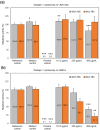
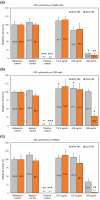
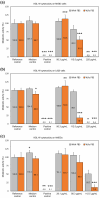

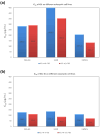
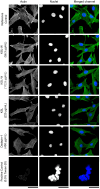
Similar articles
-
Characteristics and Potential of KSL, KSL-W, and Dadapin-1 Antimicrobial Peptides for Preventing Infections of Orthopedic Prosthetic Devices: Identifying the Most Robust Candidate.Int J Mol Sci. 2025 Aug 11;26(16):7745. doi: 10.3390/ijms26167745. Int J Mol Sci. 2025. PMID: 40869067 Free PMC article.
-
Antibacterial Activity on Orthopedic Clinical Isolates and Cytotoxicity of the Antimicrobial Peptide Dadapin-1.Int J Mol Sci. 2023 Jan 2;24(1):779. doi: 10.3390/ijms24010779. Int J Mol Sci. 2023. PMID: 36614222 Free PMC article.
-
Boosting stability and therapeutic potential of proteolysis-resistant antimicrobial peptides by end-tagging β-naphthylalanine.Acta Biomater. 2023 Jul 1;164:175-194. doi: 10.1016/j.actbio.2023.04.030. Epub 2023 Apr 24. Acta Biomater. 2023. PMID: 37100185
-
Advancements in peptide-based antimicrobials: A possible option for emerging drug-resistant infections.Adv Colloid Interface Sci. 2024 Nov;333:103282. doi: 10.1016/j.cis.2024.103282. Epub 2024 Sep 6. Adv Colloid Interface Sci. 2024. PMID: 39276418 Review.
-
How Useful are Antimicrobial Peptide Properties for Predicting Activity, Selectivity, and Potency?Curr Protein Pept Sci. 2025;26(1):22-40. doi: 10.2174/0113892037317887240625054710. Curr Protein Pept Sci. 2025. PMID: 39021188 Review.
Cited by
-
Protease-Resistant, Broad-Spectrum Antimicrobial Peptides with High Antibacterial and Antifungal Activity.Life (Basel). 2025 Feb 5;15(2):242. doi: 10.3390/life15020242. Life (Basel). 2025. PMID: 40003651 Free PMC article.
-
Discovery of a Potent Antimicrobial Peptide Through Rational Design: A New Frontier in Pathogen Control.Biomolecules. 2025 Jul 11;15(7):989. doi: 10.3390/biom15070989. Biomolecules. 2025. PMID: 40723861 Free PMC article.
References
MeSH terms
Substances
LinkOut - more resources
Full Text Sources

